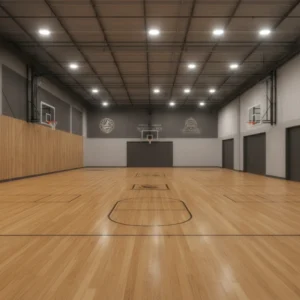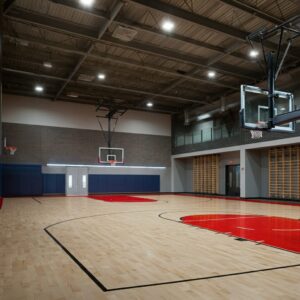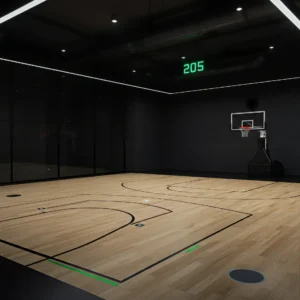Basketball is a sport of precision, endurance, and relentless energy. One critical factor that often goes unnoticed is the role of basketball court dimensions in player performance and fatigue. Did you know that a mere difference of a few feet in court size can significantly impact a player’s workload and endurance? Whether it’s the NBA’s expansive 94-foot court or the NCAA’s slightly smaller surface, the size of the court influences everything—from running distance to fatigue management.
This blog explores the connection between basketball court dimensions and player fatigue, dives into the science of how size affects player workload, and shares strategies to optimize endurance on larger courts. Keep reading to learn how basketball court size impacts players and what strategies can help them stay at the top of their game.
Standard Basketball Court Sizes
Before we get into the effects of court size on fatigue, it’s important to understand the standard dimensions used across various levels of basketball:
- NBA Court Dimensions:
- Length: 94 feet
- Width: 50 feet
- NCAA Court Dimensions:
- Length: 84 feet
- Width: 50 feet
- FIBA (International) Court Dimensions:
- Length: 91.9 feet
- Width: 49.2 feet
The NBA’s court is the largest, demanding more movement and energy from players compared to NCAA or FIBA courts. That 10-foot length difference between NBA and NCAA courts may not seem like much at first glance, but the workload it creates is substantial.
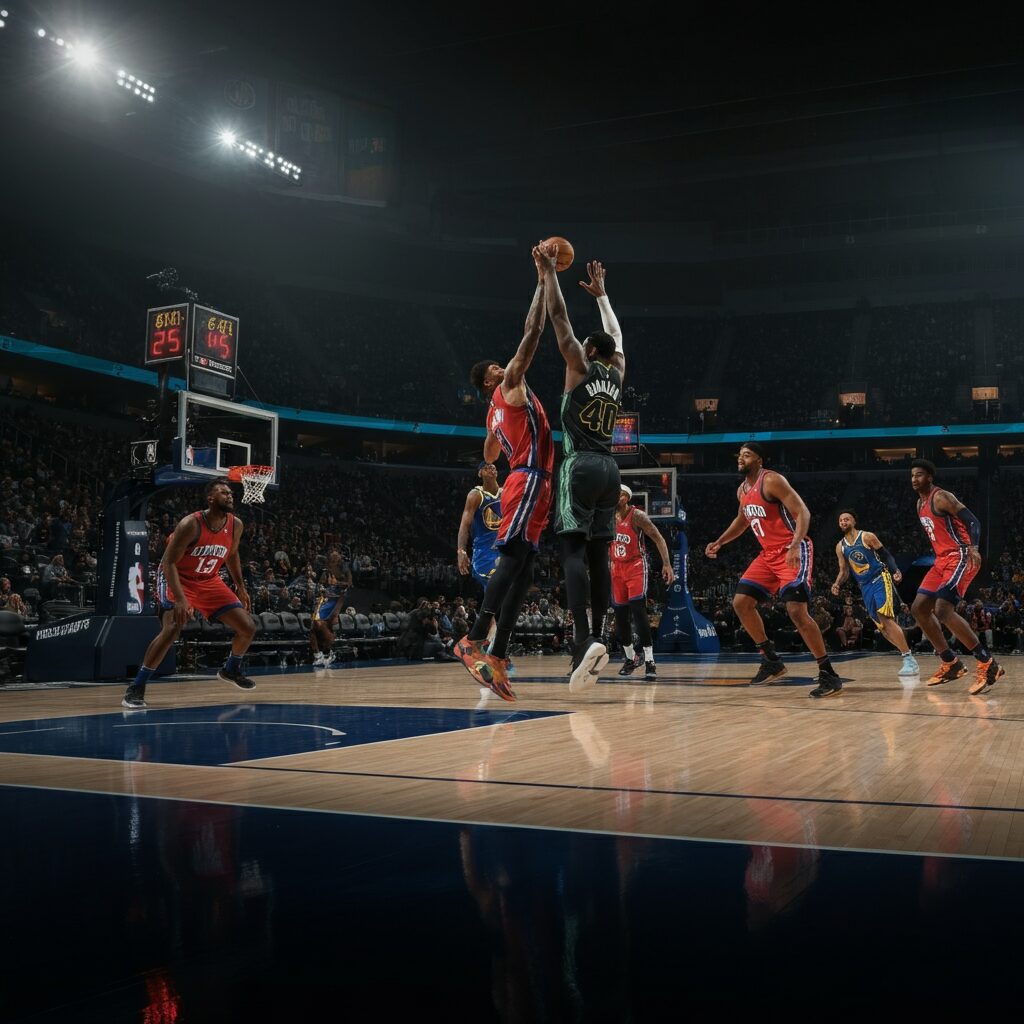
The Impact of Court Size on Player Movement and Workload
Larger courts might seem like an open playing field—but they place significant physical demands on athletes. Here’s how:
Increased Running Distance
Research shows that players on NBA courts cover an average of 2.5 miles per game, approximately 15% more miles than on FIBA courts. That extra running distance not only increases physical strain but also magnifies fatigue in high-intensity games.
Pace of Play
Larger courts encourage a faster-paced game. For example, teams like the Golden State Warriors, known for their high pace, force players to transition frequently between offense and defense. The need for constant sprints across greater distances adds to fatigue and strategic challenges.
Cognitive Load and Fatigue
Extended court sizes aren’t just physically demanding. Fatigue also affects decision-making late in games. Studies reveal a 10-15% rise in fatigue-related errors during fourth quarters of NBA games compared to shorter-court games like NCAA.
Research on Player Fatigue in Basketball
The science doesn’t lie. Studies consistently show that larger courts lead to increased fatigue-related challenges:
- Fatigue-Related Errors
Players experience a noticeable decline in performance as fatigue sets in. Sprint-heavy games on larger courts amplify this effect, with many critical late-game plays resulting from errors tied to exhaustion.
- Impact on Injuries
Research highlights a 20% increase in fatigue-related injuries, such as ankle sprains and muscle strains, during the NBA regular season. With more ground to cover, maintaining agility and endurance becomes critical to avoid such injuries.
- Player Transitions
European talent transitioning to the NBA often struggles due to the NBA’s larger court dimensions. Players accustomed to smaller FIBA courts require specific conditioning to adapt to the increased workload.
For proof, there’s no better example than the 2015 NBA Finals. Stephen Curry and LeBron James both showed visible signs of fatigue during the series, as the larger court size and relentless pace impacted even these elite athletes in high-stakes moments.
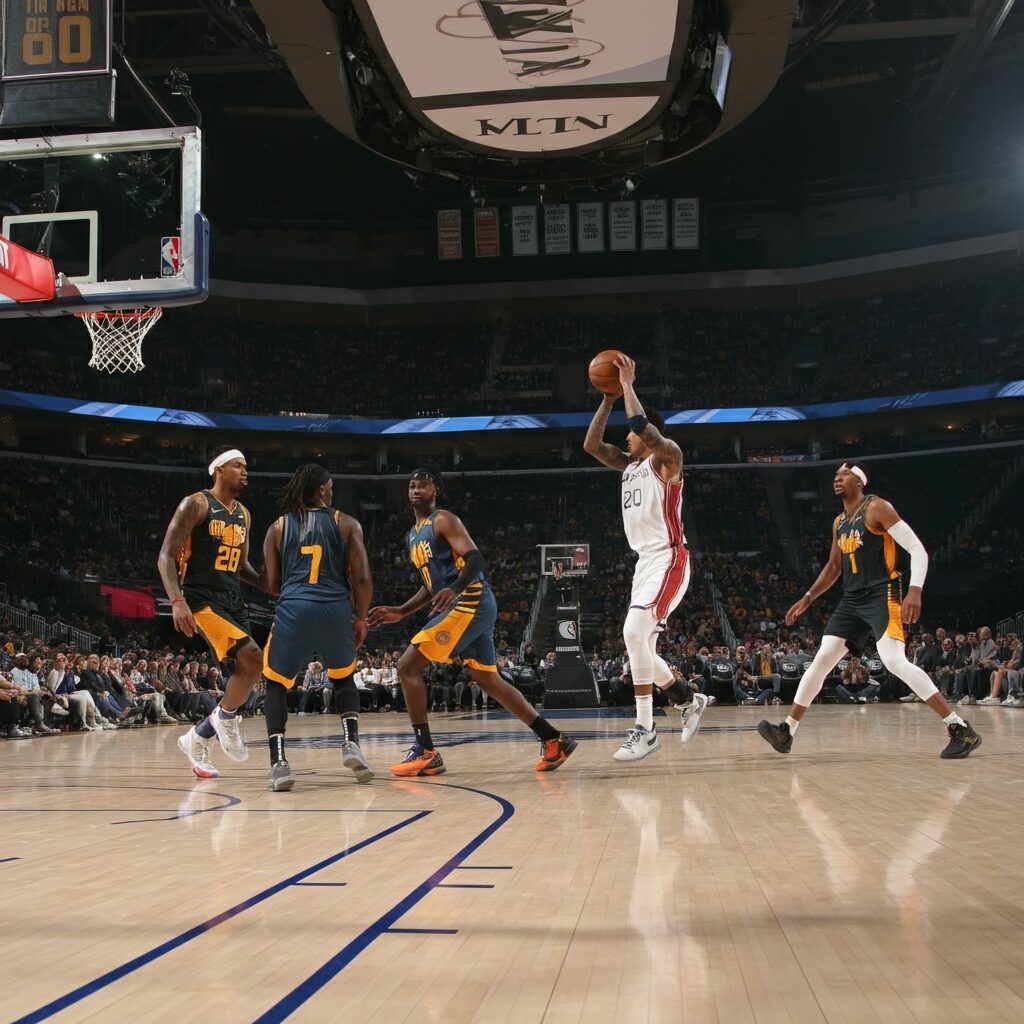
Strategies for Managing Fatigue on Larger Courts
Bigger courts might be more demanding, but with the right strategies, players can thrive under these intense conditions. Here’s how players and coaches are addressing these challenges:
Build Endurance with Tailored Drills
Professional trainers frequently incorporate conditioning drills geared toward larger courts. These exercises improve endurance by 12%, while reducing fatigue-related errors by 8%.
Strategic Substitutions
Timing is everything in basketball. Coaches like to swap out key players strategically during high-intensity stretches of play to keep them fresh for closing moments. This approach is particularly effective for games on larger courts.
Player Positioning
Using player positioning to conserve energy is a skill LeBron James has famously mastered. By minimizing unnecessary movement early in a game, players conserve energy for more critical final quarters.
Nutrition and Recovery
To sustain energy on bigger courts, nutrition and post-game recovery become paramount. Players must focus on hydration, nutrient timing, and proper cooldowns to reduce muscle fatigue and soreness.
Balancing Court Size and Player Endurance
The debate about whether court size benefits or hinders basketball isn’t simple, but there’s no denying the impact it has on performance. Larger courts, like those in the NBA, push players to their physical and mental limits—but with the right training, strategies, and recovery practices, players can rise to the challenge. Teams must consider everything from conditioning to substitution rotations to gain an edge on these expansive playing fields.
And while court size impacts players, the surface they play on is just as critical. Copo Sports offers high-quality basketball court floors that ensure durability, optimal traction, and superior performance. Whether it’s an NBA-size hardwood court or a FIBA-standard sport floor, our surfaces are engineered to bring out the best in players.
Want to learn more about how Copo Sports can enhance your basketball court? Contact us today to explore our premium basketball flooring options.




